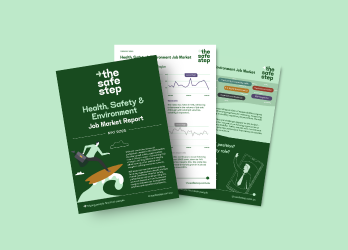Hybrid Work Is Here To Stay, But in What Form?
Page Published Date:
June 2, 2022
The world of work has changed forever. Hybrid work is now the ‘new normal’ expected by HSE jobseekers. Many Australian businesses are embracing hybrid ways of working and rethinking how to get their hybrid models right for the long-term.
On the other hand, some organisations are unable or unwilling to offer opportunities to work from home. In these instances, an expectation gap is occurring leading to significant challenges in retaining staff and attracting new talent. Read on to learn more.

Hybrid work arrangements for workplace health, safety & environment professionals
Hybrid work models are highly sought-after by Australian workplace health and safety professionals, especially if they have had the option to work from home in a previous role.
“The majority of safety professionals currently working in a hybrid model are keen to retain flexibility when looking for a new job,” says The Safe Step CEO Aaron Neilson. “This is often becoming the first filter for them to determine whether they apply for a particular position or not.”
Organisations offering hybrid work tend to have access to a broader pool of HSE professionals. Where hybrid work models aren’t possible access to talent is somewhat restricted and some roles are proving harder to fill.
Is hybrid suitable for your organisation?
Being able to offer hybrid ways of working isn’t always a viable choice for employers. Working from home is often easier for ‘knowledge workers’ than it is for many blue-colour workforces.
For white-collar employers it is more a question ‘how’ not ‘if’ hybrid work should be implemented. Following rapid adoption during the pandemic, many Australian organisations are now rethinking and refining hybrid models to ensure they are right for the long-term. “Employers are continuing to evolve their approach on an ongoing basis. They will need to continue to do so to ensure the balance of what works for the individual, the team and the business is maintained,” explains Neilson.
Employees can’t work from home if they are required to operate equipment, undertake site-specific duties, or serve customers face-to-face. Where HSE professionals support such workforces, they may need to be seen onsite to understand dynamics and to engage staff. In these instances, employers can offer other forms of flexibility such as varied hours, compressed work weeks, additional leave entitlements or other incentives to attract and retain talent within the organisation.
Aaron Neilson has seen some organisations dangle financial incentives in front of potential employees as a trade-off for a lack of hybrid work arrangements. “Throwing money at the problem isn’t always an effective or sustainable solution. You need to be creative to entice talent. Culture, people, brand and EVP remain attractive, alongside hybrid work offerings,” he says. Be clear about what you can offer as an employer to differentiate and put yourself at the top of the list, rather than being eliminated before the process even begins.
Getting hybrid work right for the future
There are many variations on what a good hybrid work model looks like. Expectations vary greatly between sectors, workforces and individuals. A co-design process can help ensure arrangements are ‘fit for purpose’, giving employees a voice in designing a workplace that works for them.
Aligning needs is key to getting hybrid work right explains Aaron Neilson. “Organisations having success are those with a collaborative process, where individuals can shape their work patterns within a broad organisational framework,” he says. “Considerations are made around what works for the individual, what works for the team/business unit and what works for the organisation as a whole. Whilst not always easy to achieve, the ‘sweet spot’ allows for the needs of all three to be met.”
Communication and consistency are key for long term success. Employers need to be clear about their hybrid work policy or approach and not just ‘launch and leave’. Frameworks must also evolve to meet changing ‘norms’ and to ensure the balance is maintained.
How to attract job seekers looking for hybrid work
It’s important to have a clear and compelling hybrid work offer to attract a strong pool of candidates to your job listing.
- Have a clear company policy outlining what flexibility means to your organisation.
- Ensure that your framework for hybrid working is accessible through your website and social platforms that job seekers may use to research your business.
- Promote opportunities to #WFH in job advertisements and other communication channels
- Develop case studies of the different types of hybrid arrangements that exist within your organisation, demonstrating the diversity of options, real life examples resonate for people.
- Discuss hybrid work arrangements early-on in the recruitment process to ensure alignment.
- Where hybrid work isn’t possible offer incentives and/or other forms of flexibility e.g. varied work hours, compressed work week, extended leave options.
- Be clear about your overall Employee Value Proposition – hybrid work is just one string in your EVP bow.
How we can help
We are well placed to advise organisations on positioning a role to attract top workplace health and safety professionals. If you are looking for support in this area, please feel free to give your Safe Step consultant a call to discuss.




